What You Need to Know About Sciatica and Spinal Stenosis
Sciatica and spinal stenosis are two conditions that often go hand in hand, causing debilitating pain and discomfort. If you’re suffering from either of these conditions—or both—it’s important to understand how they affect your body and how physiotherapy can help alleviate your symptoms. In this post, we’ll dive into what you need to know about sciatica and spinal stenosis, how they’re connected, and how treatment can provide relief.
What Is Sciatica?
Sciatica refers to pain that radiates along the sciatic nerve, the largest nerve in your body. This nerve starts in the lower back and runs through the hips, buttocks, and down each leg. When this nerve becomes irritated or compressed, it can lead to sharp, shooting pain that runs down the leg, often accompanied by tingling, numbness, or weakness in the affected leg.
Sciatica is typically a symptom of another underlying issue, such as a herniated disc, muscle imbalances, or spinal stenosis. The pain can range from mild to severe and may worsen with prolonged sitting, standing, or physical activity.
What Is Spinal Stenosis?
Spinal stenosis occurs when the spaces within the spine narrow, putting pressure on the spinal cord and nerves. This narrowing can happen in the neck (cervical stenosis) or the lower back (lumbar stenosis) and is most often caused by age-related changes in the spine, such as the thickening of ligaments, the development of bone spurs, or the degeneration of spinal discs.
The narrowing of the spinal canal can lead to compression of the nerves, causing pain, numbness, and weakness in various parts of the body, particularly the legs and lower back. In severe cases, spinal stenosis can impact balance and coordination.
How Sciatica and Spinal Stenosis Are Connected
Spinal stenosis and sciatica are closely related. When spinal stenosis occurs in the lumbar spine (lower back), it can directly compress the sciatic nerve, leading to the symptoms of sciatica. As the space in the spine narrows, the pressure on the nerve increases, causing pain and discomfort that radiates down the leg.
In fact, lumbar spinal stenosis is one of the most common causes of sciatica, particularly in individuals over the age of 50. The combination of these two conditions can make it more difficult to maintain an active lifestyle, as the pain can limit mobility and interfere with daily activities.
Common Symptoms of Sciatica and Spinal Stenosis
The symptoms of sciatica and spinal stenosis can vary from person to person, but common signs include:
Lower back pain: Pain in the lower back that may radiate into the legs.
Numbness or tingling: Often felt in the legs, feet, or toes.
Muscle weakness: Particularly in the affected leg.
Pain that worsens with activity: Sitting, standing, or walking for long periods of time may intensify the pain.
Difficulty standing up straight: The pain may decrease when bending forward or sitting down.
How Physiotherapy Can Help Sciatica and Spinal Stenosis
If you're dealing with both sciatica and spinal stenosis, it’s crucial to address these conditions together for the best results. Physiotherapy offers a range of treatments that can reduce pain, improve function, and help you manage your symptoms. Here’s how physiotherapy can help:
Pain Management
Physiotherapists use techniques like manual therapy, massage, and heat or cold therapy to alleviate pain and reduce inflammation in the affected areas. These treatments can provide immediate relief, especially during flare-ups.Posture and Alignment
A key aspect of both sciatica and spinal stenosis is poor posture and spinal misalignment. A physiotherapist can assess your posture, identify any misalignments, and teach you how to sit, stand, and move properly to reduce pressure on the spine and sciatic nerve.Stretching and Strengthening Exercises
Gentle stretching exercises can help improve flexibility and relieve tension in the muscles around the spine, hips, and legs. Strengthening exercises focus on building the muscles that support the spine, which can help reduce the pressure on the spinal nerves and provide long-term relief.Core Stability
Building a strong core is essential for supporting the spine and preventing further injury. Core stability exercises can improve your posture and reduce the strain on your lower back, alleviating some of the symptoms of both sciatica and spinal stenosis.Education and Lifestyle Changes
A physiotherapist will also provide advice on lifestyle changes that can reduce the risk of worsening symptoms, such as proper lifting techniques, avoiding prolonged sitting, and incorporating regular movement into your routine.
When to Seek Treatment for Sciatica and Spinal Stenosis
If you’re experiencing the symptoms of sciatica and spinal stenosis, it’s important to seek treatment as soon as possible. Early intervention can prevent the conditions from worsening and help you avoid more invasive treatments, such as surgery. A physiotherapist can assess your condition and create a tailored treatment plan that addresses your unique needs and goals.
Conclusion
Sciatica and spinal stenosis are common conditions that often go hand in hand, causing pain and limiting mobility. However, with the right treatment approach, including physiotherapy, you can manage your symptoms, improve your quality of life, and stay active. Don’t let sciatica and spinal stenosis control your life—take action today and start feeling better with the help of physiotherapy.



